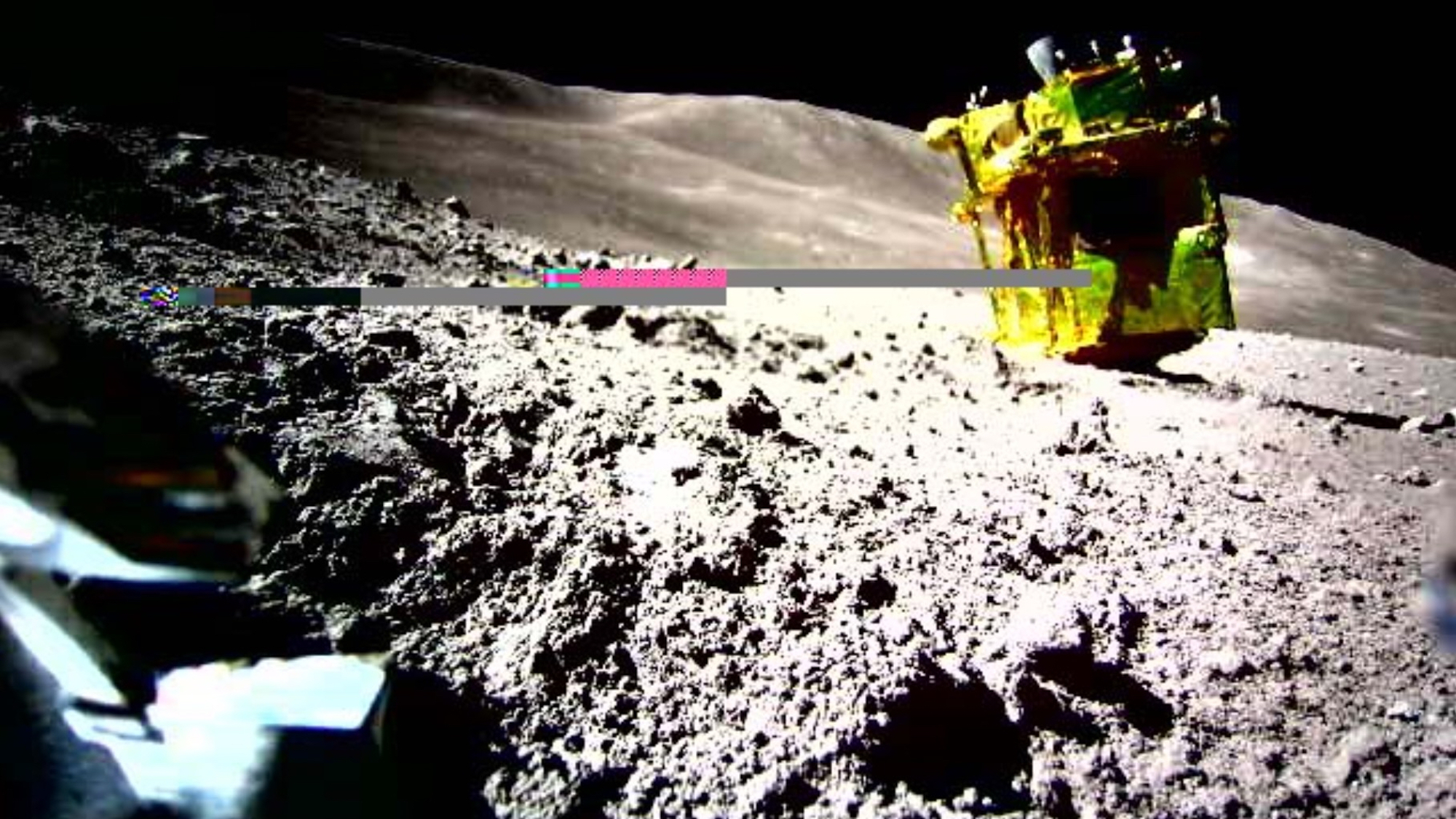

Here’s the good news: Japan’s space agency confirmed its historic Smart Lander for Investigating Moon (SLIM) successfully touched down last week with near pinpoint accuracy.
The bad news? SLIM did it upside-down.
The Japan Aerospace Exploration Agency (JAXA) confirmed the topsy-turvy predicament on Thursday, thanks to images received from a pair of autonomous probes dispatched by SLIM shortly ahead of touchdown. Regardless of its positioning, however, JAXA project manager Shinichiro Saki gave the endeavor a “perfect score.”
“Something we designed traveled all the way to the moon and took that snapshot. I almost fell down when I saw it,” he said through the Associated Press on January 25. “We demonstrated that we can land where we want. We opened a door to a new era.”
[Related: Japan makes history with its first uncrewed moon landing.]
Japan is now the fifth nation to make it to the moon’s surface, but differentiates its feat through its precision. Although lunar landers previously aimed for landing zones as large as six-miles-wide, SLIM lived up to its “Moon Sniper” nickname. Following a few days of analysis, JAXA confirmed the craft landed barely 180-feet from its already impressive 330-feet-wide target—well within the hopes of JAXA engineers. SLIM now resides close to the Shioli crater on the moon’s near side.
During its descent, however, officials have now confirmed the lander’s main engines malfunctioned an estimated 162-feet above the surface. This loss of thrust resulted in a slightly rougher touchdown than planned, likely influencing its current inverted position. Due to SLIM’s now-perpetual handstand, its solar panels are angled in the wrong direction. Without any reliable access to the sun’s energy, SLIM is basically powerless—at least for the time being. JAXA officials believe there still may be a chance for their lander to juice back up in a few days’ time, once the moon re-enters its daytime orbit.

But even if SLIM is destined to take an indefinite, much deserved nap, its mission has already provided researchers an initial batch of data. The lander’s two tiny drones, LEV-1 and LEV-2, transmitted a recording of their mothership’s landing alongside 275 images back home.
SLIM arguably marks one of JAXA’s biggest accomplishments in years. In 2003, the agency’s Hayabusa probe began its two-year journey to the 1,000-foot-long asteroid, Itokawa. Hayabusa took off yet again in 2005, finally returning to Earth in 2010 with samples in tow—a first in space exploration. JAXA repeated a similar mission with Hayabusa2, which returned from its sojourn to the asteroid Ryugu in 2020.
The lunar win also likely provides a welcome morale boost for the nation’s space enthusiasts. Last April, private Japanese company ispace’s Hakuto-R lander made it to the moon’s orbit, but promptly crashed during its descent attempt.